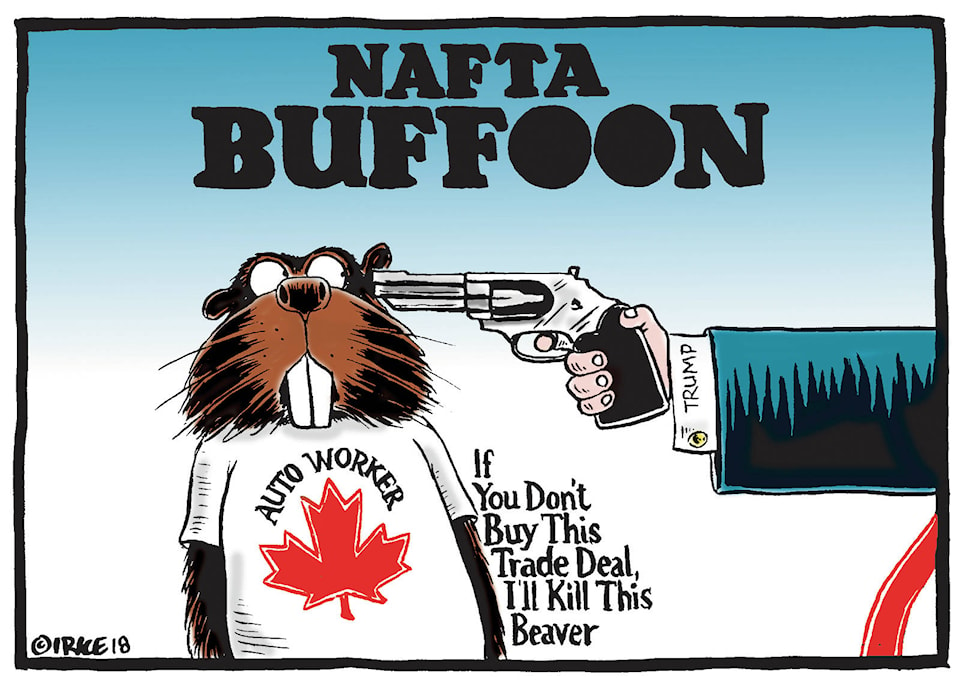Supply management is much in the news lately, as Trump huffs and puffs over NAFTA and Canada’s chances of getting any kind of deal are looking a little grim.
Fully one third of Canadians have told the Angus Reid polling agency that they don’t have an opinion on this major sticking point in trade negotiations because they don’t know enough about it. A further 37 per cent say Canada should end supply management, while 34 per cent say it should be kept in place.
Well clearly that means…. what exactly?
And what is supply management, exactly?
Luckily, I have access to the Google.
According to the Library of Parliament, supply management is a way for farmers – and more specifically, those who produce milk, chickens and eggs – to control, through a marketing system, the supply or quantity of their commercial products. In order to market their products, producers must hold a permit, commonly known as “quota,” without which they would not be able to sell their products to a processing plant.
Supply management came about in the 1960s, as price instability, caused by technological advances, became a major concern for producers.
In a perfect market, demand and supply are equal. Supply exceeding demand is not good for producers. Demand exceeding supply is not good for consumers.
Therefore the agricultural industry in the 1960s lobbied their provincial governments to set up marketing boards to coordinate production while controlling imports.
The Farm Products Agencies Act was created in 1972.
A national agency representing each industry sets the national production level based on demand.
As with any government act, it’s just as simple as can be.
For instance, under Ontario’s supply management system, to hold a quota, a farmer-member must have at least 14,000 units of chicken production (one unit corresponds to 13 kilograms [kg] of chicken), which is equivalent to 182,000 kg of chicken production per year.
Dairy sales are negotiated not in terms of litres of milk, but in terms of daily kilograms of butterfat produced, the equivalent of one cow’s production, whereas in the poultry industry, quota is sold by units produced or square metres of floor space. For example, in Manitoba, one production unit is equivalent to the production of one chicken. In Quebec, one square metre of chicken production is equivalent to the production of 7 to 10 birds.
Supply-managed farmers are guaranteed a minimum price for their products. Through their provincial marketing boards, farmers collectively negotiate minimum farm-gate prices with processors. This minimum price is based on production costs and market conditions, such as consumer demand, inventory available on the market and the price of competing products.
The supply management system controls imports by setting tariffs — which President Trump (recently described in a book by Bob Woodward as having the comprehension level of a 5th grader) understands are very, very bad.
Any import over the allowable quota can be subject to tariffs of over 300 per cent.
When Canada signed on to the Trans Pacific Partnership trade agreement, supply management folks in Canada were shaking in their boots because the TPP hinted at increased access for European cheese. That, supply management people feared, was the beginning of a slippery (but delicious) slope.
And now, the entire system is under scrutiny as NAFTA negotiations loom large.
It’s a bit of a political nightmare. For Andrew Scheer, who supports supply management, and supporters of which were instrumental in winning him party leadership, it’s delicate because a good portion of Conservative voters don’t like the system. 56 per cent of Conservatives say they would end supply management to get a trade deal with the U.S.
For Trudeau, in the unenviable position of trying to negotiate with someone whose attention span is that of a gnat’s, it’s extremely delicate. Give too much, they’ll be howling from the rafters that you folded. Don’t get a deal, they’ll be screaming that you couldn’t get it done.
It’s all so very complicated. But after reading about it, I know one thing. I feel like chicken tonight.
I think I’m going to cook up about 2,000 units of chicken production. With 500 units of gravy production, using half a kilogram of butterfat. I’ll probably use only one square metre of chicken production, though, going with the obviously larger, Manitoba bird.
